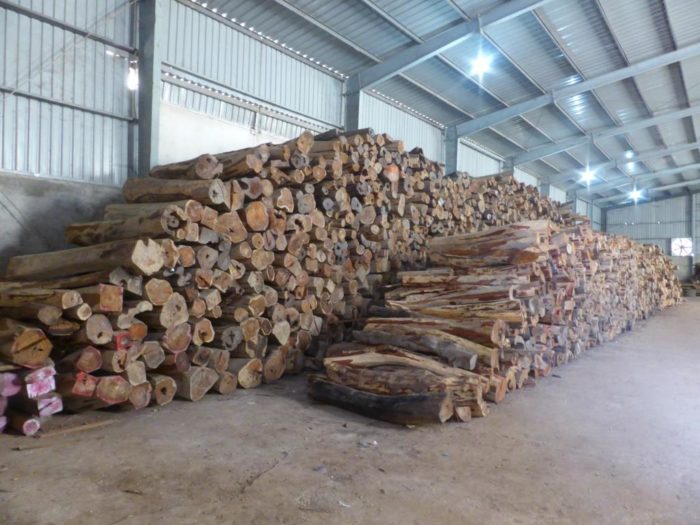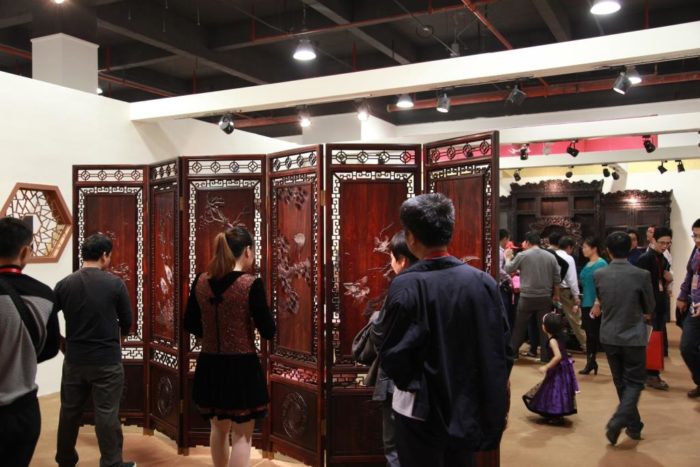CITES inaction not an option for threatened rosewoods



Rosewood logs stored in a warehouse, Dong Ha, Vietnam (c) EIA
A Chinese proverb states “The best time to plant a tree was 20 years ago. The second best time is now” – but efforts to protect forests should also start at the upcoming Convention in International Trade in Endangered Species, more commonly known as CITES.
Three years ago, EIA campaigners joined diligent range states in advocating the protection of precious rosewoods under CITES. One such species, Siamese rosewood, was listed with moderate protection on Appendix II. Yet within the past three years, we’ve documented unsustainable trade enabled by a loophole permitting a different type of product to be traded than the one listed.

Hongmu furniture finishing in China (c) EIA
At CoP17 we will be campaigning to close this loophole and, as this species rapidly approaches commercial extinction in Asia, give it one more chance of survival.
Siamese rosewood is not the only rosewood species under threat; there are global efforts to save an increasing number of precious rosewoods from being exploited to extinction to feed the booming high-end furniture industry in China and Vietnam.
EIA has been investigating this furniture trade, known in China as Hongmu (red wood), which only sources timber from a formal list of 33 tropical rosewood species. The more valuable species are recognised on the IUCN threat list as endangered or vulnerable. This list is known as the Hongmu Standard.
Traditionally, the Hongmu trade sought timber from within Asia but in recent years, as the local supply was depleted, traders have cast their proverbial nets further afield. Recent trends indicate growing imports from Africa and, to a lesser extent, Latin America. Across these continents, EIA’s investigators posed as buyers and documented crime, corruption and human rights abuses throughout transnational supply chains in tropical rosewoods.
Although the majority of Hongmu species are protected at the national level, with either complete bans or restrictions on harvesting and trade, the Hongmu trade has nevertheless grown exponentially and has pushed a number of species towards commercial extinction. Logging often occurs in protected areas and precious species are often harvested and traded without the pre-requisite scientific information.
The high prices commanded within the trade coupled with minimal enforcement have resulted in a sharp decline in populations. Most of these species have slow rates of germination, meaning the situation is far less encouraging than the Chinese proverb suggests – in the case of Siam rosewood, 20 years is a short period of time to await regrowth. Instead, we’re likely to witness irreversible damage to ecosystems.

An elaborate screen of Siamese rosewood at a Hongmu trade show in China (c) EIA
There have been sporadic efforts to raise awareness among Chinese consumers about the impacts Hongmu trade. For example, a Beijing-based foundation launched an appeal to celebrities and their followers not to collect Hongmu furniture and crafts. It is likely this effort will fall short unless Chinese policymakers can come to terms with the extent to which the Hongmu industry stimulates demand.
Before any of the above desperately needed policy responses are realised, concerned rosewood range countries across the globe are seeking to increase protection under CITES. ‘Rosewood’ is often a catchall term for dalbergia species on the Hongmu standard. Fortunately, there are two proposals for CoP17 to consider which seek to regulate the Hongmu trade more broadly – one to regulate the entire family of dalbergia trees and the other to enhance protection for an overlooked species, Pterocarpus erinaceous.
The upcoming CoP17 in South Africa in September presents countries with an opportunity to collaborate on an international level on all aspects of the supply chain. Given the scale of demand, these species need protection under CITES and via enforceable national legislation.
To do neither is as good as signing a waiver for their extinction.